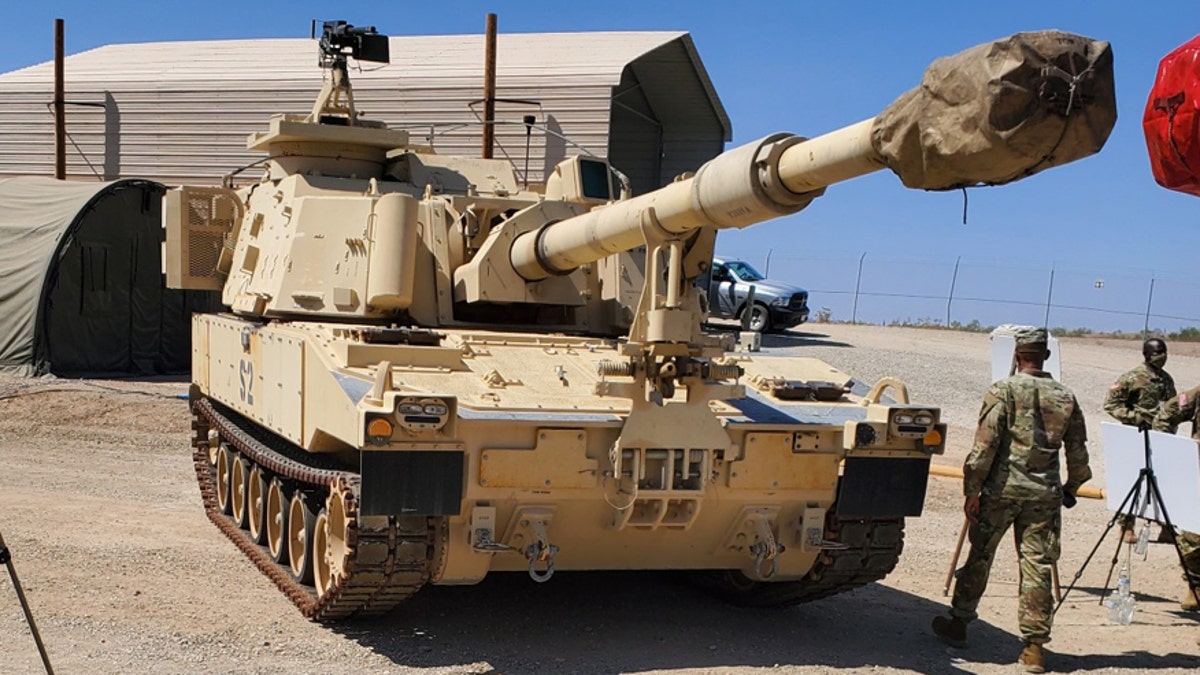Fox News Flash top headlines for September 30
Fox News Flash top headlines are here. Check out what's clicking on Foxnews.com.
The Army’s Project Convergence 2020 sought to bring new, explosive “warfare at speed” dimensions to future combat as part of a broad transformational attempt to surge in front of competitors and near-peer rivals with accelerated networking and sensor-to-shooter times … designed to enable an entirely new generation of warfare possibilities.
The network consists of many interwoven technical elements to include software-defined radio, high-bandwidth, radio-generated data links, satellite connectivity and, of course, synchronized databases with high-powered computer processing. These constituent elements need the proper interface to ensure both sustained connectivity and continued modernization possibilities. With the proper standards and technical infrastructure, disparate communications avenues can interoperate.
At one point during the exercise, satellite connections tied to Joint Base Lewis McChord (JBLM) in Washington state were accessed to locate enemy targets at Yuma Proving Grounds, Arizona.
“We are looking at how we can use satellites to enhance the speed of targeting,” Army Secretary Ryan McCarthy told reporters during the experiment.
'ATTACKING AT SPEED': ARMY PROJECT CONVERGENCE AND BREAKTHROUGH LIGHTNING-FAST WAR
Operators at JBLM found an enemy BM30 Multiple Launch Rocket System, which then sent targeting information to Army helicopters conducting combat operations at Yuma. The Future Lift helicopter then used data links to connect with a mini-drone Air Launched Effects platform to conduct forward reconnaissance to find the enemy rocket launchers, before networking the target details to a ground-operated Extended Range Cannon Artillery (ERCA). ERCA then fired a precision-guided Excalibur 155mm artillery round 56 km (34.8 miles) to destroy the enemy MLRS. In this case, GPS-enabled satellite connections passed targeting details to radio-empowered high-bandwidth data links to video feed data links down to AI-enabled ground-based computers and over to an artillery fire-control system. This happened quickly, as intended.

Howiter artillery vehicle at Yuma Proving Grounds, Ariz. being used in the Army's Project Convergence 2020. (Kris Osborn)
The targeting coordinates were sent to the ground artillery system, which then destroyed the enemy asset. In this case, various different networking systems operated with the desired synchronicity to operate quickly over great distances to find and destroy the enemy. This connectivity was the precise point of Army efforts to break new ground with Project Convergence 2020. Much of the connectivity was enabled by Army software engineers and scientists monitoring the computer codes through which targeting specifics were fed via a fast-moving AI-enabled data analysis target-sensor pairing system called FIRESTORM.
Using AI and this enhanced networking, the Army has now condensed the entire sensor-to-shooter "Kill Web" process from as much as 20 minutes down to as little as 20-seconds in some cases, senior developers explained.
"When the UAV was flying, it had automated target recognition capability to determine the target. It then sends that information across the network. What FIRESTORM does is it then pairs the right shooter to the right target and makes the determination of which weapon is the safest and best. It is not engaging or pulling the trigger, it is up to the human operator to say 'you fire that one and you fire that one.’ The network does all of this because you need to feed that data quickly," said Maj. Gen. John George, Commanding General of the Army's Combat Capabilities Development Command, a division of Army Futures Command that oversees the Army Research Laboratory.
NAVY ELECTRONIC WARFARE STOPS MULTIPLE ENEMY MISSILE ATTACKS AT ONCE
George explained that all of the data is sent through software programmable radio, which Army engineers have configured into every sensor to expedite the transfer of data.
"We call this S&T (science & technology) in the dirt," he added.
On the ground in Yuma, Army engineers further explained the networking process to Army Secretary Ryan McCarthy, saying that the mesh networking and information exchange is done with single-channel software-programmable radios.
"This allows us to integrate radios and sensors into every single platform whether it is a Gray Eagle or NGCV (Next Generation Combat Vehicle). We learned the configuration and networking can be done but we are going to continue to evaluate waveforms," an Army engineer said.
CLICK HERE TO GET THE FOX NEWS APP
With this accelerated network connectivity, targeting grid coordinates did not have to pass through lengthy, time-consuming procedures sending data to higher headquarters before details were sent to a weapons system. The sensor-shooter pairing was done in seconds, while still approved by a human.
Kris Osborn is the managing editor of Warrior Maven and The Defense Editor of The National Interest.

